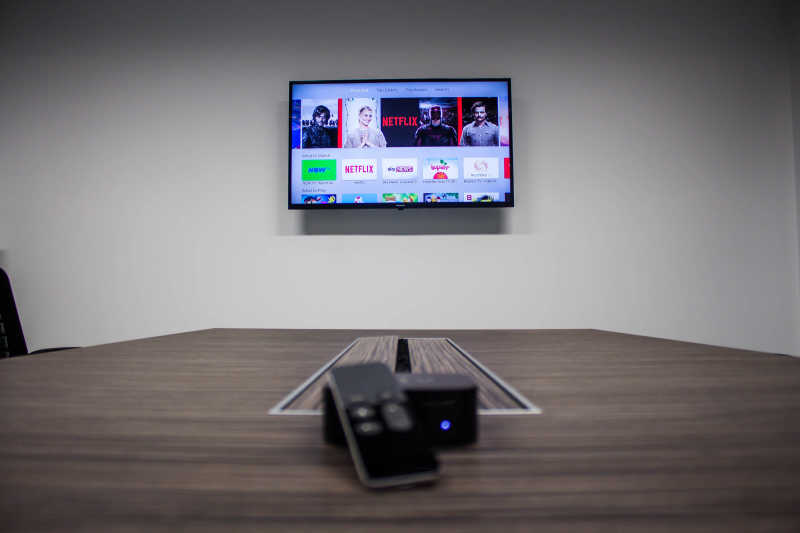We use our post-PC technologies – iPhones‚ iPads and wearable tech – to keep in touch with people‚ stay organised‚ manage our health and fitness‚ and even replace our wallets and plastic. With HomeKit‚ now we can also use our iOS devices to connect the products we use in our home — so we can privately and securely control them and make them work together.
Introducing Apple’s HomeKit
HomeKit was first announced at Apple’s Worldwide Developers Conference (WWDC) in June 2014. It is a framework for configuring‚ controlling and communicating with connected home automation accessories that support Apple’s HomeKit Accessory Protocol. HomeKit currently works with any iPhone‚ iPad or iPod touch that can run iOS 8.1 and IOS 9‚ as well as Apple Watch devices with Watch OS2.
Apple created a common language that smart devices from any manufacturer can understand and support. Users can also create actions to control accessories (such as a thermostat or light)‚ group them together‚ and trigger them. Using Siri‚ Apple’s voice-activated assistant‚ you can control smart devices with just your voice.
HomeKit objects are stored in a database residing on the user’s iOS device‚ which is synchronised over iCloud to other iOS devices. HomeKit supports remote access to accessories‚ multi-user devices‚ and multiple users. It also handles security and privacy for users.
HomeKit Features
HomeKit is designed to make the home automation experience more consumer-friendly. The framework provides us with the ability to remotely control our home and all the smart devices inside it. The best part is we needn’t use several individual apps to control all the smart devices in our home. Moreover‚ Apple TV can act as an intermediary or an entry point‚ letting users issue Siri voice commands to their homes from a remote location.
You need an iOS device to turn your house into a voice-controlled machine. Discover HomeKit accessories in your home and configure them‚ or create actions to control those devices. Users can group actions together and trigger them using Siri. With HomeKit‚ users can also utilise home automation apps on their iOS devices to control and configure the connected accessories in their homes‚ regardless of the manufacturer and mobile app developer.
![[object Object] [object Object]](http://images.ctfassets.net/o6514hijae09/6Tc6MgGcnQ4fvoDvVJClzz/65b6764cc8c2f28c31f760c7b3b96319/iPhone.jpg)
In addition to saying things like “Siri‚ turn on the lights‚” users can get specific by setting up zones in their houses. For example‚ we will be able to say “turn off the upstairs lights” or “set the Master Bedroom to Bedtime‚” if we are in another room or on our way home.
We need an iOS device to turn our house into a voice-controlled machine. We can enable users to discover HomeKit accessories in their home and configure them‚ or we can create actions to control those devices. Users can group actions together and trigger them using Siri. With HomeKit‚ users can also utilise home automation apps on their iOS devices to control and configure the connected accessories in their homes‚ regardless of the manufacturer and mobile app developer. In addition to saying things like “Siri‚ turn on the lights‚” users can get specific by setting up zones in the house. For example‚ we will be able to say “turn off upstairs lights” or “set the Master Bedroom to Bed Time‚” if we are in another room or on our way home.
How HomeKit Works
![[object Object] [object Object]](http://images.ctfassets.net/o6514hijae09/51uyGTPNVb0LpDvGn15w42/a824e62918a3d8d6f6edee2812a846a9/HomeKit.jpg)
HomeKit is based on a “Home Manager” that allows you to manage your home and a common database‚ stored in iOS‚ that contains all the information about the home‚ its rooms‚ the accessories inside them‚ and their services and characteristics.
Having everything stored in one place makes for a more consistent experience across apps. For instant‚ whatever settings you have set up in your light control app‚ can be duplicated for your speaker control app: Same home name. Same room names. Same accessory names.
HomeKit and Mobile App Developers
HomeKit allows mobile app developers and accessory manufacturers to define custom services and characteristics. Action Sets are collections of actions that are executed together; triggers execute action sets at predefined dates and times.
Most importantly‚ Apple takes HomeKit security and privacy very seriously. There’s end-to-end encryption between connected devices and accessories‚ and adding a new accessory requires a setup code that comes from the accessory‚ typically on the packaging or a label. Any accessory-maker that wants to develop HomeKit accessories has to join Apple’s Made for iPhone (MFi) certification programme‚ which requires the use of HomeKit’s security system.
Some of the HomeKit-enabled products that are currently available include: Lutron Caseta Lighting Starting Kit‚ Insteon Hub‚ Elgato Eve Room‚ Eve Weather‚ Eve Door & Window‚ Eve Energy sensors‚ Ecobee3 smarter Wi-Fi thermostat and iHome iSP5 Smartplug.
Pain Points with HomeKit:
HomeKit accessories are a relatively new phenomenon for 2015‚ and the framework is just two years old. As such‚ there are still plenty of bugs to be fixed and kinks to work out in the system. Siri doesn’t always work; Bluetooth-based accessories can’t update without a device nearby to check their status; and Wi-Fi based accessories all require different bridges—which leads to a lot of bridges in your network room.
Siri isn’t perfect and if we rely on her to unlock the doors in our home‚ we might run into some issues. For now‚ the language we use with Siri must be specific. If we want to unlock the door we should say “Siri‚ lock my door lock” specifically— “Siri‚ lock my door” will not work. However‚ Apple plans to create public awareness about how to use the various HomeKit-compatible gadgets.
The journey towards smart yet safe homes has just begun. It’s only a matter of time before people wake up to the true potential and comforts brought by home automation. Each and every accessary will greet us by the time we reach home‚ or as we move around in it. Soon‚ all our home accessories will become a sort of extended family‚ lively and ready to respond to our every need.






